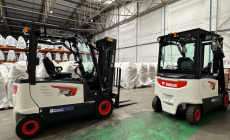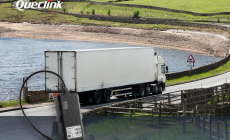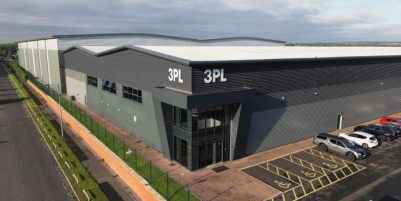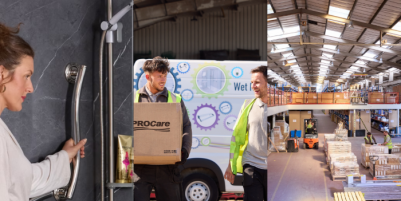-
DATA ANALYSIS – THE FOUNDATION OF EVERY PEAK SEASON - December 5, 2025
-
Creative education specialists Creative Hut give 3PL full marks for onboarding excellence - December 5, 2025
-
Unlimited Industries raises $12M to build the AI construction company that will power America’s future - December 4, 2025
-
Scottish Leather Group gets full-support solution from Rushlift - December 4, 2025
-
Etaily lands strategic investment from Japan’s SMBC – bringing total funding to $24M for Social Commerce enablement platform - December 4, 2025
-
Winners lift their LEEA Awards and raise the industry - December 4, 2025
-
Prism eLogistics and Brand Angels Partnership Gives Brands the Full Package - December 3, 2025
-
New data shows Tesla in danger of losing its way as European consideration to buy Chinese cars jumps 16% in 12 months - December 3, 2025
-
QUECLINK DEVELOPS SATELLITE-ENABLED VEHICLE TRACKING FOR UNINTERRUPTED TRANSPORT MANAGEMENT - December 3, 2025
-
Ocado Ads partners with Epsilon for people-based precision - December 3, 2025
We hear regularly about Industry 4.0, Digital Transformation 2.0 and how organisations are adopting AI to help run their businesses more efficiently. These changes are happening at lightning speed and yet the reality in many warehouses across the UK is very different. These are warehouses managed with paper processes, where operatives input the day’s transactions manually using spreadsheets. Warehouses where knowledge is power and information is always slightly out of date. Places where if an operative leaves the business, they take all their knowledge of processes, stock locations and customer special requirements with them, leaving an efficiency gap to fill.
If you haven’t transitioned already, make 2024 the year you implement WMS technology.
And when you do, here’s how you can expect to benefit:
Better accuracy and fewer errors
Relying on operatives to manually input the day’s transactions comes with a high risk of human error, it’s a boring task and very easy to make mistakes. By automating key processes like inventory management and order fulfilment, the likelihood of stock being misplaced drops dramatically, further improving overall accuracy levels.
Up to the minute visibility and real time tracking
Alongside the inevitable mistakes made when data entry is manual, there are delays which, when running a busy sales operation, are unacceptable. Switching to paperless systems means management have a real-time view of what inventory levels are. They can see the status of the day’s order pool and know exactly where shipments are in the dispatch dock. Having this level of information available translates into better, faster decision making and improved all round business agility.
Rein in and reduce operating costs
If you eliminate paper processes in the warehouse you can automatically reduce the number of operatives needed on a routine basis, which dramatically cuts labour costs. Instead the operatives you do employ can work more efficiently and follow highly optimised workflows to further enhance the cost savings achievable.
Cut your warehouse carbon footprint
Every business has set itself net zero targets and getting to this point means everyone in every department doing their bit to become more environmentally efficient. The warehouse is no exception, going paperless will reduce your consumption of paper and cut waste. Using technology in a fresh produce environment means stock can be rotated more efficiently and shipped more quickly. The result is faster, fresher deliveries to consumers and less stock being wasted because of sell by date issues.
Poised for business growth
Paper based processes are viable up to a point but once a warehouse reaches a certain throughput, they become unsustainable. In contrast, a paperless warehouse driven by software can scale easily as the business grows. If more operatives are needed for a busy period, there’s no real learning curve to climb before they become fully efficient.
Better place to work
Almost without exception, when a warehouse switches to paperless working, even the most sceptical operatives admit they wouldn’t want to return to the old way of doing things. Technology creates a much more ergonomic and pleasant working environment. Workers can reach their targets more easily, which means higher pay and enhanced efficiency.
Implement ongoing warehouse improvements
Efficiency and accuracy aside, one of the most powerful benefits of going paperless comes from the business insights that are captured automatically whenever a transaction is completed. Over time, this data can be analysed to spot market trends, further optimise warehouse processes, make decisions about resource utilisation and training and to enhance the warehouse layout.
What are you waiting for?
At a time when many businesses are continually seeking ways to enhance operational efficiency, be more innovative and reduce their environmental impact, it is surprising that many warehouses still haven’t switched to paperless working. Don’t be one of them.
Why not make 2024 the year your warehouse finally ditches paper and spreadsheets? We guarantee you’ll never look back.

































